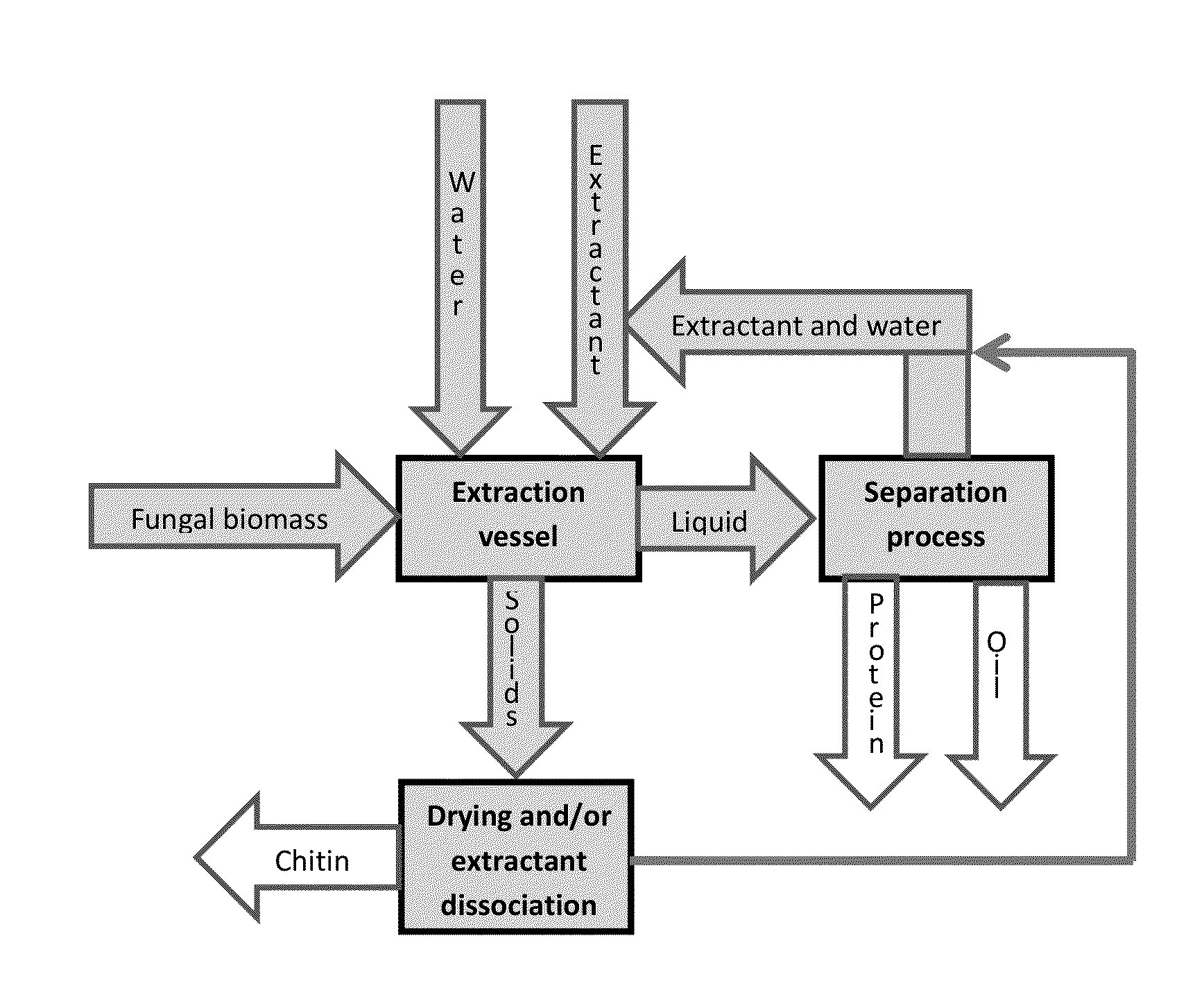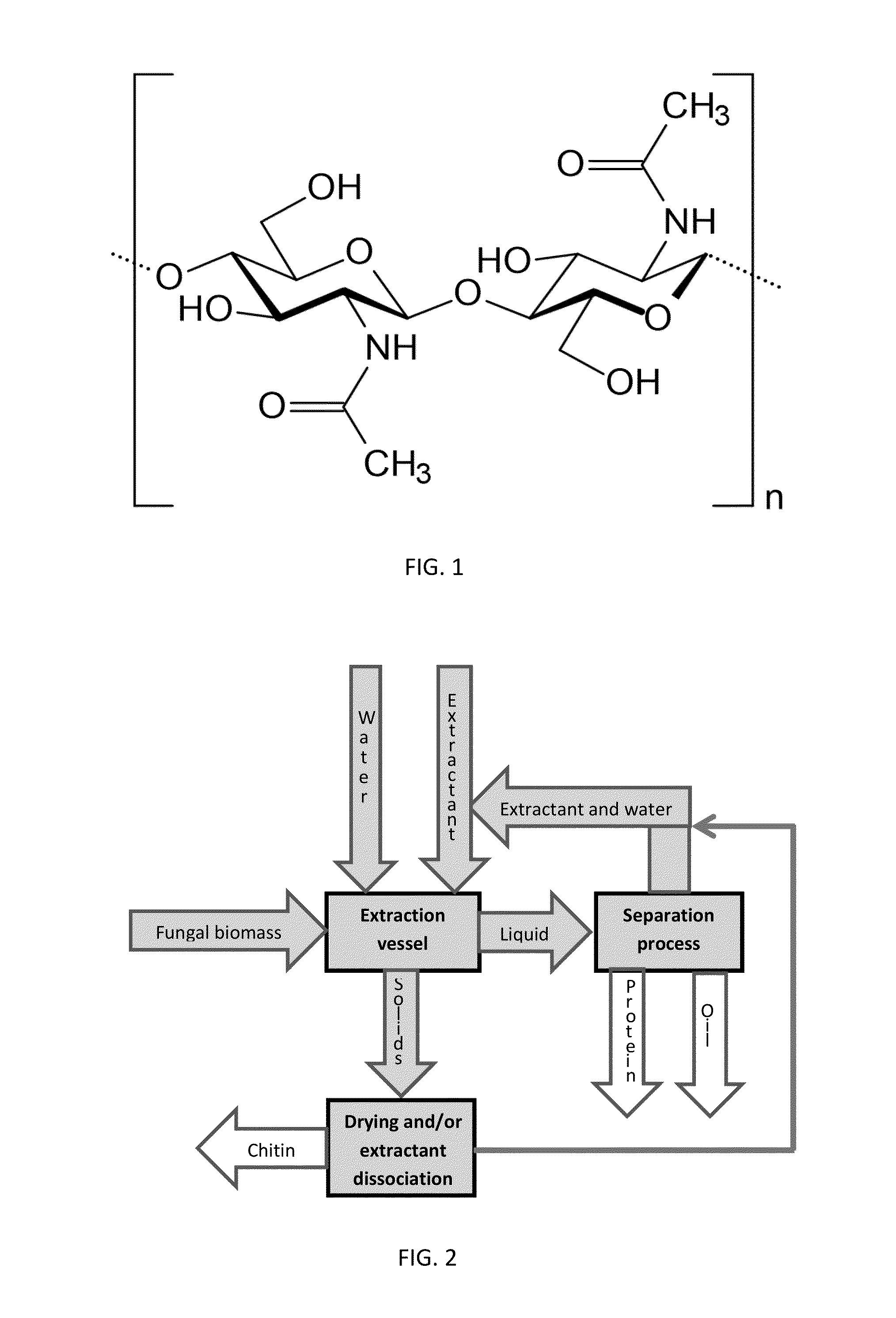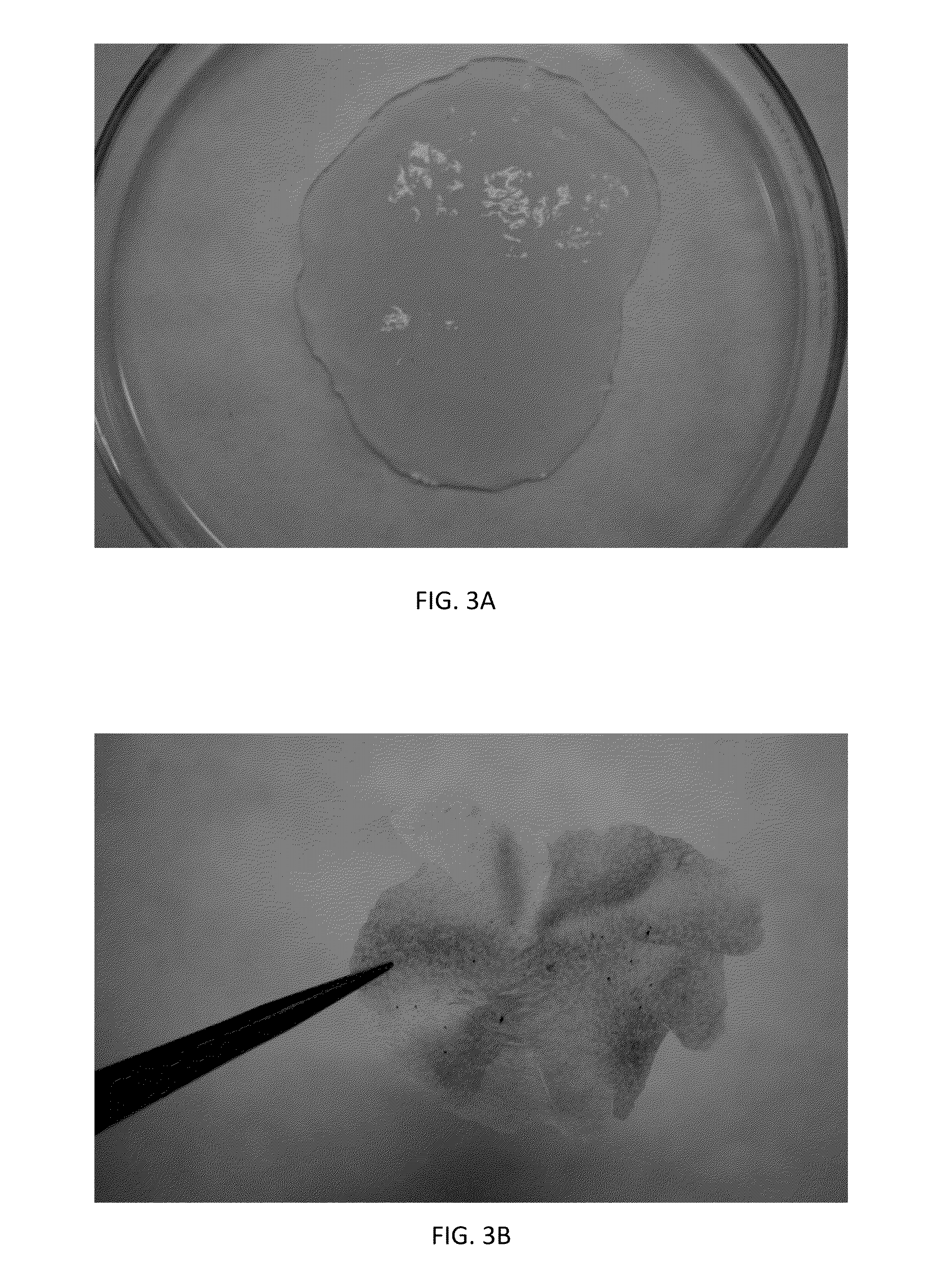Processes for isolating chitin and chitosan from fungal biomass
a technology of chitosan and chitosan, which is applied in the field of chitin production, can solve the problems of significant environmental impact of extraction process used to convert glucosamine from crustacean chitin waste streams, significant concentration of industrial contaminants in products derived from these crustaceans, and achieves the effect of reducing environmental impact and increasing yield
- Summary
- Abstract
- Description
- Claims
- Application Information
AI Technical Summary
Benefits of technology
Problems solved by technology
Method used
Image
Examples
exemplary embodiment 1
[0038]In a first exemplary embodiment, ammonium hydroxide, generally at a concentration of 30% or less, may be used as the extractant at temperatures of 0-150° C. and pressures of 0-1000 kPa (0-145 psi). In some embodiments using ammonium hydroxide as the extractant, protein may be extracted and chitin may be obtained using 15% (weight / volume) aqueous ammonium hydroxide (NH4OH) at 60° C. in a closed reactor to maintain adequate pressure to avoid venting off the ammonia. In other such embodiments, a 1% aqueous NH4OH solution at 60° C. may be used in a closed reactor. In this first exemplary embodiment, the method may also comprise preleaching the fungal biomass in methanol. The ammonium hydroxide may be dissociated by heating between 40° C. and 45° C. under ambient pressure, cooling the ammonia vapor, and dissolving it in water at 20° C., thereby recovering the ammonium hydroxide in a modified distillation process. The methanol may also be recovered by continued distillation at tempe...
exemplary embodiment 2
[0039]In a second exemplary embodiment, ethanolamine may be used as the extractant at temperatures of 10-150 ° C. and concentrations of 1-100% in water or other solvent. Depending on the temperature and extractant concentration used, gauge pressures can range from 0-500 kPa (0-72 psi). In some embodiments using ethanolamine as the extractant, protein may be extracted and chitin isolated using a 50% aqueous ethanolamine solution at 80° C. In other such embodiments, a 30% ethanolamine solution may be used at 80° C. In this second exemplary embodiment, the method may also include preleaching the fungal biomass in methanol. The ethanolamine may be recovered by cooling the extract to below 10° C. to solidify the ethanolamine. The solid ethanolamine may be recovered by screening. In embodiments where the fungal biomass is preleached using methanol, the methanol may be recovered by distillation at temperatures up to and including 80 ° C., and recondensing the methanol vapor at temperatures...
exemplary embodiment 3
[0040]Methylamine may be used as the extractant in a third exemplary embodiment of the present invention. Typical reaction conditions include temperatures of 0-100° C. and methylamine concentrations of 1-40%. The reactions may also be performed at temperatures of up to 150° C. and gauge pressures of up to 2000 kPa (290 psi), depending on the reaction temperature and the concentration of the methylamine. In some embodiments using methylamine as the extractant, protein may be extracted and chitin may be isolated using a 10% aqueous methylamine solution at 80° C. In other such embodiments, a 40% aqueous methylamine solution at 60° C. may be used in a closed reactor to prevent evaporation of the methylamine. In this third exemplary embodiment, the method may also comprise preleaching the fungal biomass in methanol. The methylamine may be recovered by distillation, while gradually increasing the temperature of the mixture from about 0° C. to about 20° C. at ambient pressure. The methylam...
PUM
| Property | Measurement | Unit |
|---|---|---|
| temperature | aaaaa | aaaaa |
| temperature | aaaaa | aaaaa |
| temperature | aaaaa | aaaaa |
Abstract
Description
Claims
Application Information
 Login to View More
Login to View More - R&D
- Intellectual Property
- Life Sciences
- Materials
- Tech Scout
- Unparalleled Data Quality
- Higher Quality Content
- 60% Fewer Hallucinations
Browse by: Latest US Patents, China's latest patents, Technical Efficacy Thesaurus, Application Domain, Technology Topic, Popular Technical Reports.
© 2025 PatSnap. All rights reserved.Legal|Privacy policy|Modern Slavery Act Transparency Statement|Sitemap|About US| Contact US: help@patsnap.com



